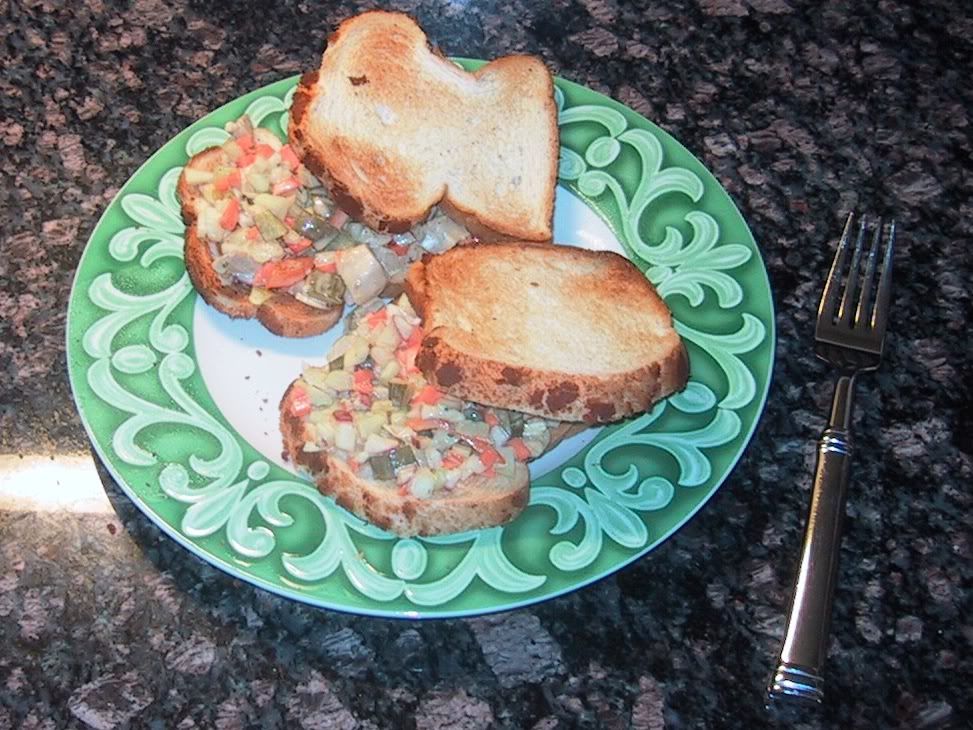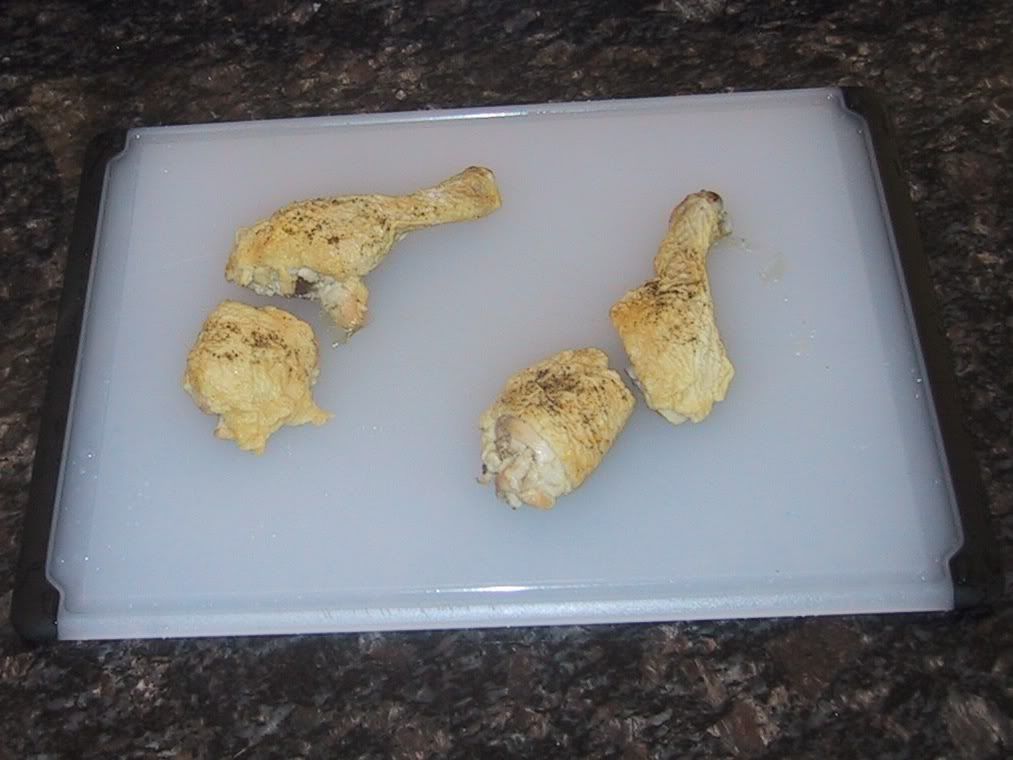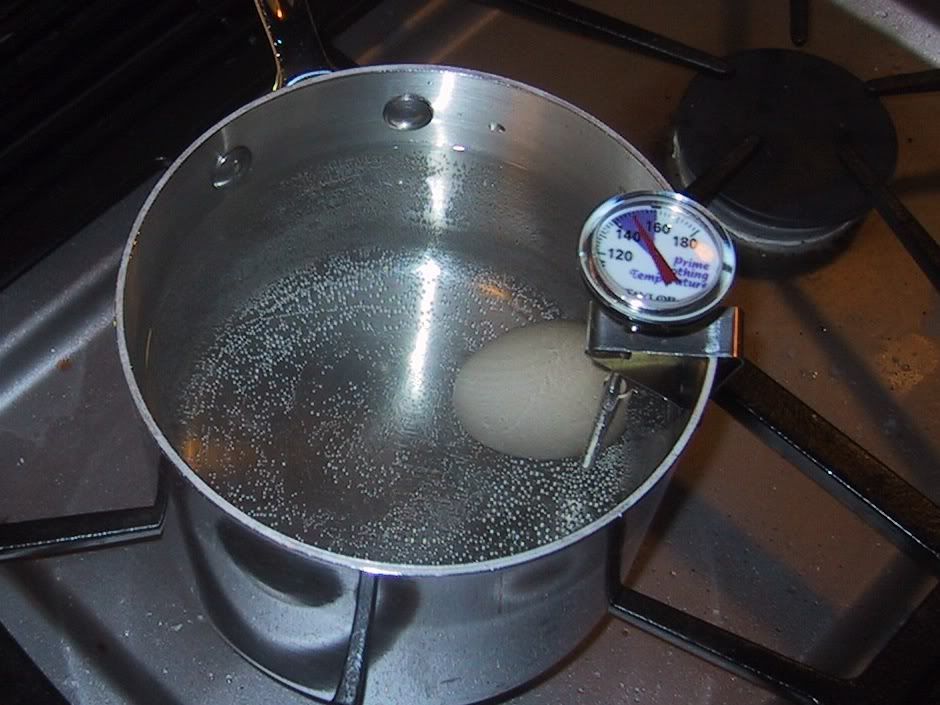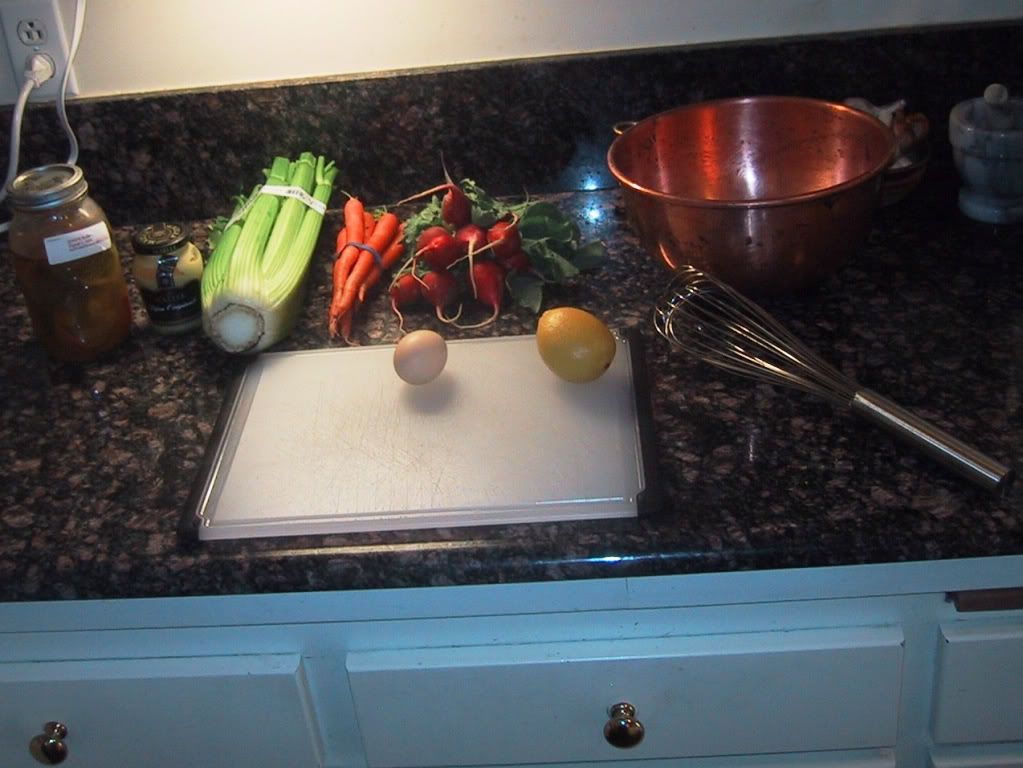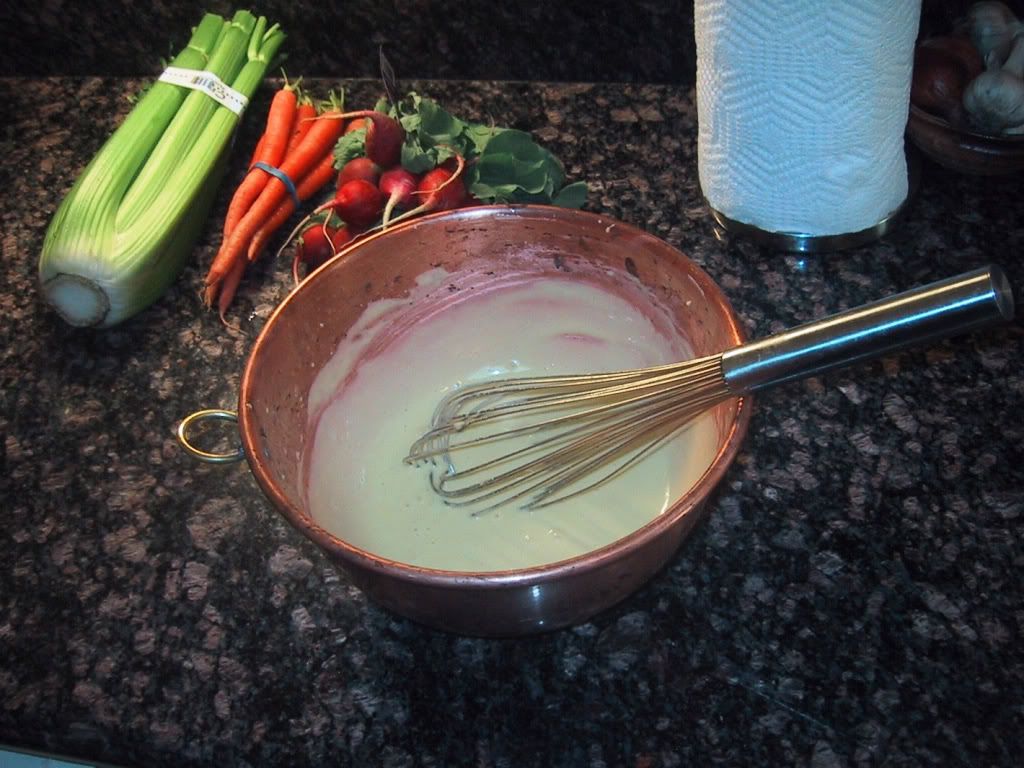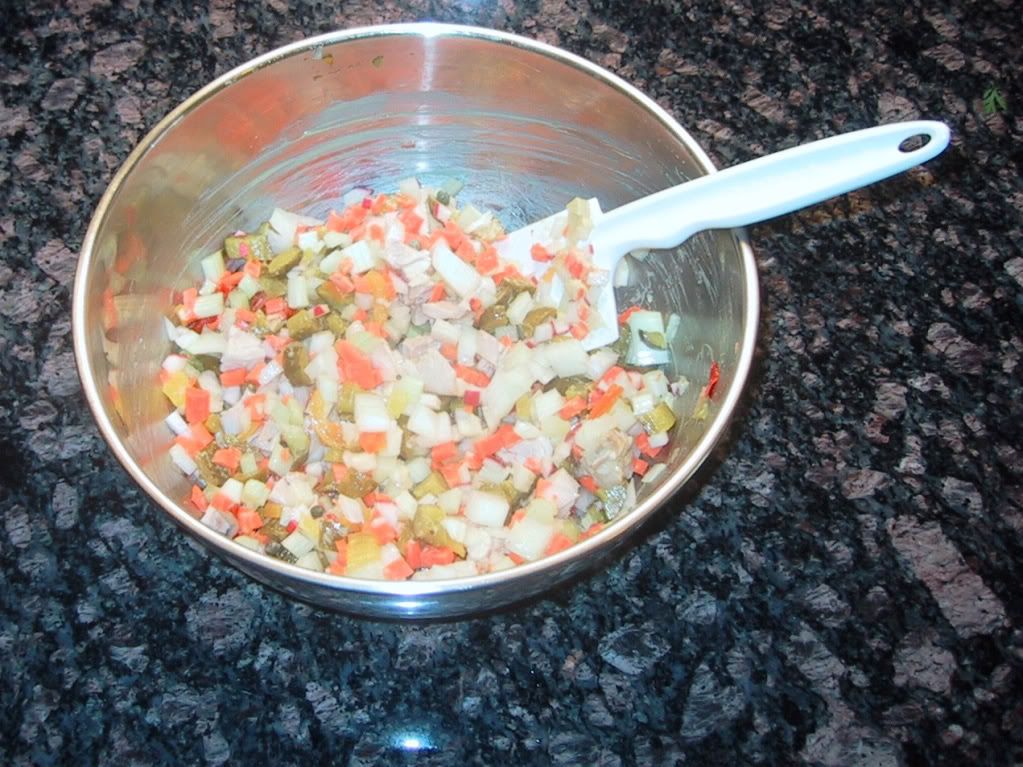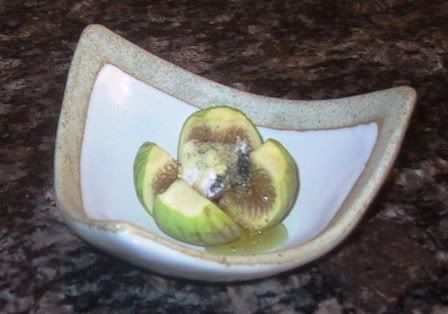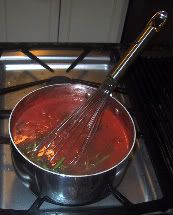Every August it seems like summer will last forever. The long days and warm weather make our back deck perfect for dining, or just sitting and reading a book or chatting over a glass of wine. Then suddenly it seems everyone kicks into a frantic gear to get the kids back to school which markedly changes the character or our neighborhood. Instead of leisurely walks with our dogs along quiet streets on weekday mornings, we either rise at 6 AM or share the narrow roads with speeding cars driven by parents dropping off their children at the high school in our neighborhood. Summer is coming to an end, which means it will soon be harvest season.
We should have been more prepared for the coming change when we saw table grapes appear at the Market stalls. There are all sorts of sweet red and yellow grapes available now that add color and texture to appetizers or make simple snacks. And they are good this year. My friends in the wine business are telling me that 2009 looks like a strong harvest of high quality fruit for California. The 2007 vintage was good with many white wines now available from that vintage. We have been enjoying many 2005 red wines lately, too. We tend to drink more white wine in the summer because our diet focuses more on light and raw dishes like cold vegetable-based soups and salads. Our entrees are usually fish, chicken, or legumes, which complement the acidity and light fruit in white wines. As the weather turns cooler we tend to eat darker greens like chard and kale and our entrees are built on a canvas of sauces which complement the bolder flavors of red wines.
I am already thinking ahead to what we will be cooking and eating as the harvest peaks and wanes. We want to capture the best of the harvest to preserve for winter in our freezer or in canning jars. This Saturday Stacy and I held our class that was donated to benefit the Lick-Wilmerding High School. It was also the first time since March that I braised beef. I designed the menu to be fun and interesting for the folks that bid so generously to participate and to practice the September 12 menu that I will cook for 60 people that generously bid on seats to benefit the Howell mountain Elementary School. We became involved in both benefits through friends. Our friend Mark, who teaches physics at Lick-Wilmerding collaborated for the Saturday class donation; and our friends Jacalyn and Allen Spence of Spence Vineyards along with Summit Lake winery conceived the September 12 party, which I volunteered to cater. It seemed fitting to me that the menu for both events would be the same. The first in August to teach and practice at the scale of a 12-person garden party followed in September as a catering job with experienced cooks by my side to serve 60 in the vineyards at Summit Lake Winery.
The menu is typical of what I would serve to my friends at a dinner party since it offers the cook the opportunity to make almost everything ahead so the cook enjoys the meal at the table along with the guests. It is also useful for a larger scale party where there are limited kitchen resources. When I say limited, I mean cooking for 60 people at a location that has what I believe to be an antique 1940’s Autogas stove and oven. Suffice to say, it isn’t nearly large enough to cook for a dinner of that scale. My solution to this challenge is to serve all courses cold except the entrée which will be braised offsite and transported in coolers to the dinner. The menu is a juxtaposition of summer and winter reflective of the time of year.
Here’s the menu we cooked on Saturday.
I have posted the recipe files here.
(You must be a member of Cooking-Fresh to view the file)
Appetizers: Heirloom Tomato Buschetta
Fresh Figs with Peppered Honey and Chevre
Soup: Chilled Avocado Corn Soup with Cilantro Oil
Salad: Stone Fruit Salad with Asian vinaigrette
Entrée: Beef Short Ribs Braised in Howell Mountain Cabernet
Cabernet Sauce
Canellini Runner Beans Dressed with Garlic Infused Olive Oil
Dessert: Ghiradelli Award-Wining Chocolate Brownies
Home Made Raspberry Ice Cream
Raspberry Sauce
This five course meal may seem complicated and way too much work for one cook to prepare and serve, but it is easy with a bit of planning and cooking ahead to spread the work out so you aren’t slaving in the kitchen hours before the meal. Here’s how:
Weekend before: Make beef stock (for entrée) and make the corn soup base (up to the point that you add avocadoes). Store the stock in the fridger. Freeze the soup base. Start thaw two days before serving in the refrigerator
Two or three days before: Make ice cream and raspberry sauce. Keep the ice cream in the freezer and store sauce in refrigerator.
One or two days before: Braise the beef using your stock. Strain and finish the sauce. Recombine and store in refrigerator in the vessel you will use to reheat the dish.
One day before: Make garlic-infused olive oil for bruschetta. Make the vinaigrettes for the bruschetta and for the stone fruit salads. Make the peppered honey, seal in an air-tight container and store at room temperature. Shop for the remaining ingredients (if we’re serving on Saturday then we buy from the Farmer’s Market in the AM). Put the white wines into the fridge to chill and stand the reds up on their bottoms in your pantry or some other dark, room temp spot in your house (This makes the wine better when opened, trust me).
With all of the work you have done during the days leading up to the party, you greatly simplify what remains to do before your guests arrive, which are:
Stone Fruit Salad: Several hours before your guests arrive, slice the fruit and onion, add to vinaigrette and stage in refrigerator. Wash the greens and stage in refrigerator. When it’s time to serve the salad course, you simply toss greens with the vinaigrette, put some greens on each plate, top with fruit and onions and serve.
Soup: About an hour before guests arrive, blend the avocados and lime with the thawed soup base and refrigerate. Also blend the cilantro and oil and sieve. This takes about ½ hour of unattended time to let the oil come through the cheesecloth, so just let it do it’s thing on a counter in your kitchen. When ready, put into the refrigerator until service time. When it’s time to serve, place ½ cup of blended soup in each bowl, add the avocado balls and crème fraiche then drizzle with cilantro oil and serve.
Bruschetta: About an hour before the guests arrive, chop tomatoes and toss in vinaigrette and leave out on the counter; slice, brush with oil and toast bread ovals. Assemble bruschetta as your guests arrive.
Figs: One hour before guests arrive slice the figs and add the cheese. Store at room temp to allow the cheese to ripen. Drizzle with honey moments before your guests arrive.
Entrée: A few hours before guests arrive, place the meat and sauce into a low oven, say 250 degrees. Just leave it in there until ready to serve. Also, shuck and wash the beans. Cut the onions and store both in the fridge. Set the beans and onions on the stove to simmer when you are ready to sit down for the soup. Check the beans between courses. When they are done, turn off the heat and let them sit until you are ready serve. To serve the entrée, take the meat and sauce out of the oven. Pool a bit of the sauce on each plate; add a rib and a side of beans that you strain out of the cooking liquid with a slotted spoon to each plate. Dress the beans with a bit of oil and salt and serve the plates.
The entree was the most kitchen time during the meal since it is the star of the meal and served hot it deserved the attention. Now linger over your wine with your guests and serve dessert when you feel it is time to transition the party.
Dessert: Bake the brownies either the day of the party or the day before. If you have two ovens and time it right you can mix the brownie dough and get them into the oven just before your guests arrive so they are warm when served. Also, take the ice cream out of the freezer and move to the refrigerator at the start of appetizers. That way it will be softened for service. The dessert service is simply place a brownie on a plate along with a side of ice cream and drizzle the raspberry sauce however you like.
You have probably noticed that the most stressful time for the cook is right before guests arrive. Don’t worry if you are still in the kitchen at the time you expect guests. It is rare that all of your guests arrive on time. I always welcome any one early into the kitchen to help with the final prep of the meal. It helps break the ice and also relieves me of some of the hectic work in that last critical half hour before the party starts. Be prepared to accept offers of help or ask for help as your guests arrive as it will make the party more fun for you and your guests.
Finally, for those of you dropping your kids off at school in the morning, please keep mindful that the groggy couple you see walking their dogs is not awake and needs a brake.























